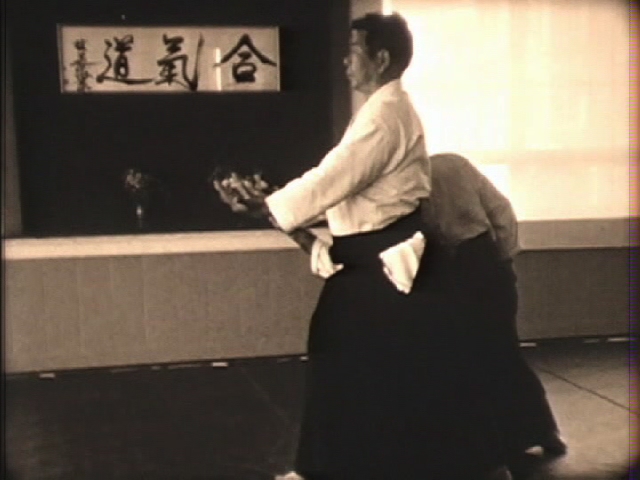Learning to turn the body, or tai-no-henko is an important practice from the Iwama Dojo.

In Morihei Ueshiba’s 1938 training manual “Budo” it is stated that “daily practice begins with tai no henko“ (see point 5 of the section entitled “How to Practice”). According to Saito Sensei, performing tai-no-henko from katate-dori (one hand gripped) was the way O’Sensei began each class and it was the way Saito Sensei himself began every class in the Iwama dojo or when he was teaching a seminar overseas.
Teachers trained in Iwama all begin their practice with tai no henko, certainly that is the method of training in the Takemusu Aiki Association. The picture below is of Takayasu Sensei performing tai no henko in the Iwama dojo in 2001.
Tai no henko is both fundamental and foundational. It is fundamental because it is part of the basic moves that any student is required to learn (often the first technique that is taught). It is foundational as it is the basis of the practice by seniors. More complex and advanced moves are developed from the ability to perform tai no henko with speed, balance and power. The Founder taught that: “Practising this tai no henko, you will build up strong and stable hips which will never be affected whether your partner pushes or pulls you.”
As with all practices which are done regularly and appear simple to execute, the deeper meaning of the movement is often elusive. And simple movements are always difficult to do well every time. That is why we do it again and again and again.
It is significant for me in the practice of tai no henko that one does not try to turn away in a circular fashion from an opponent’s power – although that appears to be the result. Rather it is necessary to enter straight into conflict with the opponent. Here there is an apparent contradiction between the ways of conflict and that of coordination that is practised in Aikido. The key is the point at which one turns off the line of attack. It is the point of the interface between your power and that of your opponent.


